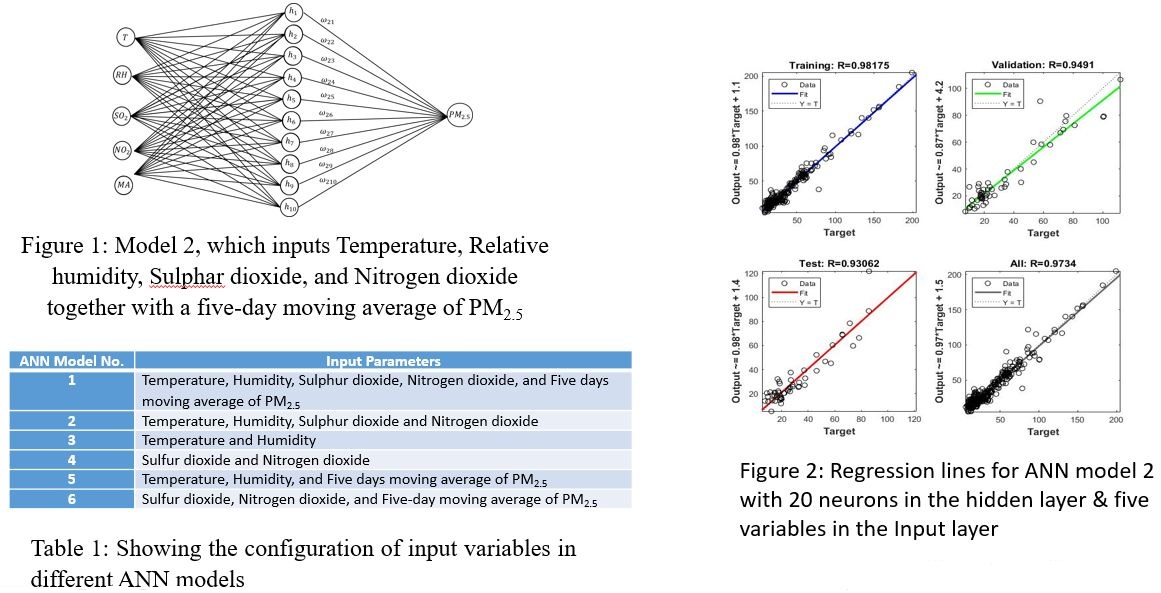
The increasing air pollution has become a serious concern as it links with health issues. Worldwide, it has caused premature deaths. The intense research is the need of time. One of the main causes of air pollution is the existence of particulate matter, i.e. the air contains a mixture of solid particles and liquid droplets. These particles/droplets cause severe effects on health issues, especially breathing problems. This study explores the application of Artificial Neural Networks (ANNs) to forecast the level of PM2.5 in Islamabad, addressing a critical environmental concern impacting public health. Using a diverse set of inputs Temperature, Humidity, Sulfur Dioxide (SO₂), and Nitrogen Dioxide (NO₂), alongside a five-day average of we developed models to enhance predictive accuracy. Various neural network architectures were evaluated, featuring hidden layers with neuron counts ranging from 5 to 25 and a selection of input variables. A five-day moving average of PM2.5 was also added in two models. Model performances increased linearly with the number of model neurons, peaking at a 20-neuron configuration, yielding a correlation coefficient of 0.979 and a root mean squared error of 7.82. For the training, the values of R2 increase from 0.949 to 0.98, as the number of neurons is increased from 5 to 25 and values of RMSE decrease from 7.53 to 5.82. But in validation and testing the RMSE values are lowest (8.20 and 8.13) for n = 20 neurons. The results obtained in this work are better than those obtained in the published work of the ANN model, in which only chemical parameters were utilized. These results highlight the importance of input selection and model complexity in capturing the intricate relationships inherent in air quality data. The study demonstrates that ANNs can be a powerful tool for air quality forecasting and provide valuable insights for policymakers and public health officials.
Total file downloads: 21